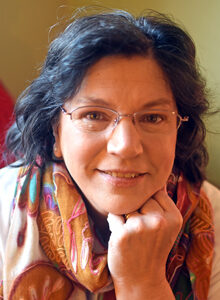Autism has a unique neurological structure with a wide variety of expressions. This diversity of strengths, challenges, and experiences is why autism is considered a spectrum disorder. It’s also what makes it challenging to diagnose and treat because the myriad of symptoms manifested in any given autistic person at any time on any calendar day is different.

Historically, autism is better identified in males than in females (Leedham, 2020). Reasons may be that: males tend to act externally when frustrated, measures of autism traits have been normed on mainly male samples, and females express autistic traits differently (Bargiela, 2016). Even some educators can identify autism in males easier than in females, despite observing the exact same scenario (Whitlock, et. al., 2020). There may also be an implicit bias toward women as autism and co-occurring disorders are often misdiagnosed in women as personality or mood disorders (Muller, 2019). In addition, females can have a higher social motivation, greater capacity for friendship, and internalize angst as compared to males (Bargiela, 2016). Lastly, women are adept at using camouflaging as a coping skill.
Camouflaging is a safety strategy where an autistic person suppresses their autistic characteristics so they appear “normal” and are accepted by mainstream society. It takes an extreme amount of energy to constantly suppress natural behaviors. It also means that the autistic person is not known as themselves but, rather, as the projected persona. This leaves the autistic person without a sense of self or of belongingness. Masking, then, can derail appropriate diagnosis.
Another difficulty in diagnosing females is how autistic people communicate. They’re generally direct, literal thinkers, so asking a patient, “How are you doing today?” can elicit one answer with two meanings: The patient responds with “good,” indicating little trouble to the provider but actually meaning “in the moment” to the patient. She may have been immobile yesterday or sleepless over the last few weeks, but that’s not “today.” Next, as women tend to internalize experiences and be very cooperative, she may outwardly appear to be getting along well in the observable moment but is internally exhausted and flooded. Cognitive processing might be slower, made worse by painful environmental stimulation. Her processing can be restrained as providers push to gather information. She may look disinterested or uncooperative or may be masking well. She is not, however, revealing her true self. Thus, diagnosis and subsequent treatment goals are miscalculated.
One critically important diagnosing tool, however, is the expertise and understanding of the clinician. This requires humility and mindfulness. It can be a tricky process to elicit the information you’re exactly looking for when communicating outside your norm. The best tool an assessor can have is to learn not only what autism is, but how it manifests in real life for that patient. Being open minded and setting aside preconceived notions is a start. The practitioner is their own best instrument.
Treatment
Research reveals considerably little about how to specifically support or treat the needs of autistic women. Thus, “evidence-based” doesn’t always apply. Treatment can also be complicated by the medical model, wherein treatment seeks to reduce or eliminate the disability rather than support it. Manualized treatments don’t always work, and behavioral treatments can actually be abusive. Because autism isn’t just a set of symptoms laid over a neurotypical mind, neurotypically-informed studies can’t simply be adjusted.
The female autistic mind works differently. Without individualized treatment, she runs a high risk of being unintentionally harmed by the very event that should help her. Indeed, research demonstrates that there are three major areas of health treatment for autistic people that cause harm: (1) difficulty accessing treatment/support; (2) lack of the helper understanding; and (3) a reduced sense of well-being (based on the first two areas) (Camm-Crobie, Bradley, & Cassidy, 2018). If providers aren’t trained well, there is even less access to treatment, greater harm, and less trust in the autistic female’s experience. Treatment needs to be an individual specialty.
Further complication to late diagnosis in women may be that females have less social support overall than males; complication also arise from a lifetime of exploitation or misdiagnosis. This, on top of the new identity inherent in a late diagnosis, changes her sense of well-being and can make for a very painful adjustment.
So, what does work? First, the practitioner must be culturally competent in the autism world. This requires both humility and the ability to slow things down so both patient and provider can understand each other. The helper needs to accept their patient’s lived experience as valid. So, too, do providers need skills in managing co-occurring disorders as studies show that at least 1 in 3 autistic people have a co-occurring disorder globally (Zeiden, et. al. 2020). Not only are co-occurring disorders more prevalent in females, they correspond positively with age at diagnosis.
Next, understand that autism is a neurodivergence with its own brain structure. It doesn’t need to be cured. Instead, treat the goals, focus on lived experience, teach coping mechanisms. A good way to remember to treat the situation rather than the autism is to keep in mind that if the client finds housing, becomes more emotionally aware, or attends better to her health, she is not less autistic (ASAN, 2022), she’s more skilled.
Recognizing that the autistic female presenting for treatment has her own unique way of communicating, own pattern of thinking and perceiving, and own sensory needs is critical. Providers do things like lower lighting, ban candles and other non-essential smells, and provide a lower sensory room without lots of wall items or foot traffic outside. This will allow energy to be used for the appointment rather than for sensory assaults. Allow stimming, pacing, movement, and toss “eye contact” as any sort of indicator. Allow breaks when necessary. No touching without permission AND prior warning. Have a “pain chart” that is experiential rather than numerical. Attention to the environment is highly important because autistic women don’t “get used to” strange situations; they mask to make it through them. And we already know that masking thwarts diagnosis and treatment. It also thwarts trust.
Next, presume competence. Be open minded and creative. Just because someone has a different brain structure doesn’t mean they aren’t competent, with valid thoughts, feelings, and goals. Accept that manuals and behavioral interventions don’t work; find out what does, directly from the client. Even if they are non-speaking, remember that ALL behavior is communication. A “difficult” client is trying to tell you something, a quiet one may be in crisis. Be prepared to use assistive devices, white boards, dancing, pointing, etc. Help her to make goals about things that are meaningful to her.
As clinicians become more accommodating in their acceptance of autism spectrum disorders, and therefore more competent in diagnosis and treatment, autistic people may feel able to present authentically, without masking, hopefully leading to a higher sense of agency, better mental health, and overall improved quality of life outcomes.
Mary P. Donahue, PhD, is Owner/Psychologist of Mindful Paths Psychological Services, LLC. For more information, email drdonahue@mindfulpaths.me.
References
Autism Self-Advocacy Network. https://autisticadvocacy.org/wp-content/uploads/2021/12/ACWP-Ethics-of-Intervention.pdf
Bargiela, S., Steward, R. & Mandy, W. The Experiences of Late-diagnosed Women with Autism Spectrum Conditions: An Investigation of the Female Autism Phenotype. J Autism Dev Disord 46, 3281–3294 (2016). https://doi.org/10.1007/s10803-016-2872-8
Camm-Crosbie, L., Bradley, L., Shaw, R., Baron-Cohen, S., & Cassidy, S. (2019). ‘People like me don’t get support’: Autistic adults’ experiences of support and treatment for mental health difficulties, self-injury and suicidality. Autism, 23(6), 1431–1441. https://doi.org/10.1177/1362361318816053
Leedham, A., Thompson, A. R., Smith, R., & Freeth, M. (2020). ‘I was exhausted trying to figure it out’: The experiences of females receiving an autism diagnosis in middle to late adulthood. Autism, 24(1), 135–146. https://doi.org/10.1177/1362361319853442
Muller, R. T., (2019). Why Women with Autism are so Often Misdiagnosed. Psychology Today, Retrieved February 2, 2023, via world wide web at: https://www.psychologytoday.com/us/blog/talking-about-trauma/201905/why-women-autism-so-often-are-misdiagnosed
Whitlock, A., Fulton, K., Lai, M., Pellicano, E., & Mandy, W. (2020). Recognition of Girls on the Autism Spectrum by Primary School Educators: An Experimental Study. Autism Research, 13.
Zeidan J, Fombonne E, Scorah J, Ibrahim A, Durkin MS, Saxena S, Yusuf A, Shih A, Elsabbagh M. Global prevalence of autism: A systematic review update. Autism Res. 2022 May;15(5):778-790. doi: 10.1002/aur.2696. Epub 2022 Mar 3. PMID: 35238171; PMCID: PMC9310578.







I am female, 77, recently received ADHD diagnosis initiated by GP. Unfortunately same caring, female GP is dismissive (“It’s all about executive function”) of my clearly expressed need further to investigate Autism component. So when I read piece re best therapeutic practice/practise I burst into tears.
(PTSD factor has been accelerating for months in tandem reaction to aggressive neighbour’s behaviour). A temporary, minimal relief – and an encouragement to try to find someone in my neck of the woods (or online?) who might help me.
I am a 87 year old woman with PhD in Clinical Psychology and MA in Mathematics now retired, married, and fighting some of what I call autistic habits. I now seem to alienate people. I’m in early dementia (on Donerpercil/. Aricept). I’d like to find more material on senior autism and if possible a support group, possibly on-line. I live in Goleta, Ca.
I’d appreciate any information you can alert me to.